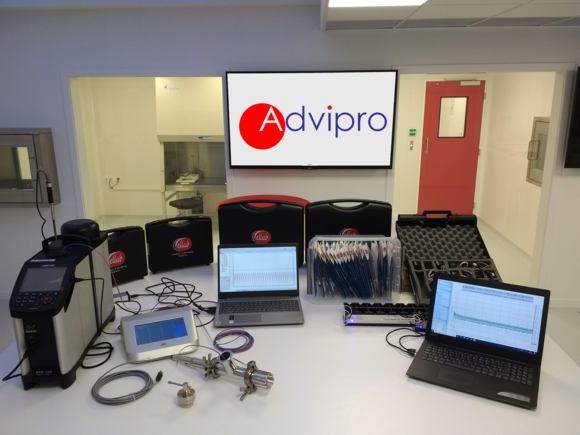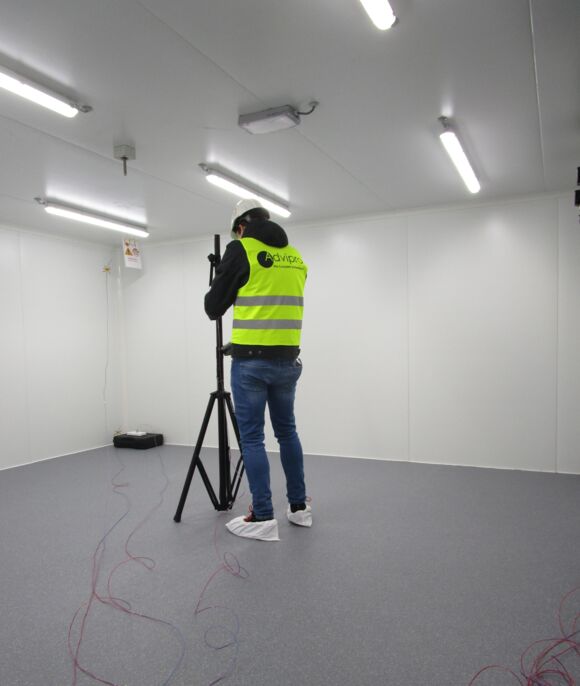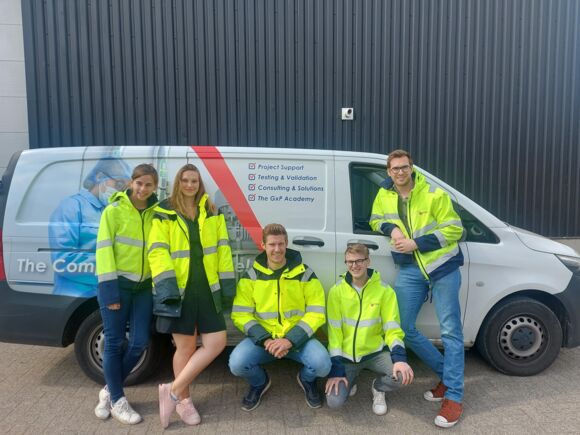

Correct kalibration
What are calibrations?
The calibration of a measuring device is the comparison of a known value with the value indicated by the device being calibrated. To make this clear, I like to give the example of a temperature probe.
To calibrate a temperature probe, we insert the probe into a calibrated dry-block, which is a device that can heat up or cool down to a desired temperature. After a short stabilization period, we compare and record the value of the temperature probe to the set temperature. We repeat this for a number of predetermined points and verify that the values noted are within tolerance.
If the value falls outside the tolerance, the probe is adjusted to ensure that a correct value is measured again in the future. In addition, a quality review is initiated to see if there is an impact on product quality. To prevent probes from going out of tolerance, an alarm value can also be set, this can be 50% of the tolerance, for example. If the alarm value is exceeded, a preventive adjustment can be done.
Calibrations are performed not only on temperature probes, but also on pressure sensors, humidity sensors, time measurements, distance measurements, light intensity meters, ...
Any measuring device important for quality and safety must be calibrated.

Why are calibrations necessary?
This brings us immediately to the next question: why are calibrations necessary? In a pharmaceutical environment, it is very important to know the exact conditions in which a product is produced, stored or transported in order to comply with Good Manufacturing Practices rules. To know this, measuring instruments can be fitted or used to make the necessary measurements. When all these probes show an accurate value, we can thus guarantee the quality of the product.
We should not even limit ourselves to measurements that are product critical, measurements that are important for worker safety are also calibrated regularly. These can be gas detection systems, radiation measurements, ...
Where is calibration done?
As mentioned earlier, measuring instruments are calibrated in a production line, but this is certainly not the only place where measurements (and thus calibrations) happen. From the beginning of production to the final product, and even storage and transportation can be part of this. For example, the temperature and humidity in the rooms where the production lines are located are also measured. Weighing of raw materials with a weighing device, mixing the raw materials in a tank with certain stirring speed and much more.

When is calibration performed?
Any measuring instrument to be calibrated first undergoes an in-service calibration. This is done to ensure that a correct value is measured from the beginning. This is followed by periodic calibrations; this is defined per measurement for the maximum time between calibrations. When it is noticed that the calibration for a particular measurement is more often out of tolerance, the frequency can be increased. If adjustments are made to a measuring instrument, two calibrations must be performed, an "as found" calibration (before the adjustment) and an "as left" calibration (after the adjustment). This is because the measurement can be affected by the adjustment and go out of tolerance, if the 'as found' calibration is then within tolerance we are sure there is no impact for past production. The 'as left' calibration is then done to make sure, just like an in-service calibration, that the correct values are measured after the adjustment. When a measuring instrument is no longer to be used and is removed from service, an out-of-service calibration must also be done. This is done to ensure that all measurements made with that device are within tolerance.
Need help with (periodic) calibrations? Advipro @ your service!
Our MoVE team to the rescue. Because our experts perform on-site or in-house calibrations on critical instruments, always with accurate, calibrated reference standards. Proof of calibration of your critical instruments is also an important criterion in inspections.
A team that analyzes, tests and validates processes, rooms and labs within the pharmaceutical sector That is the Advipro MoVE team. The team tests controlled environments and GMP-critical installations. Specifically, they test whether cleanrooms, operating rooms, production facilities and more conform to the customer's predefined (legal) requirements, think FDA, EU, ISO and PIC/s. They use accurate, calibrated measuring equipment for this purpose.


